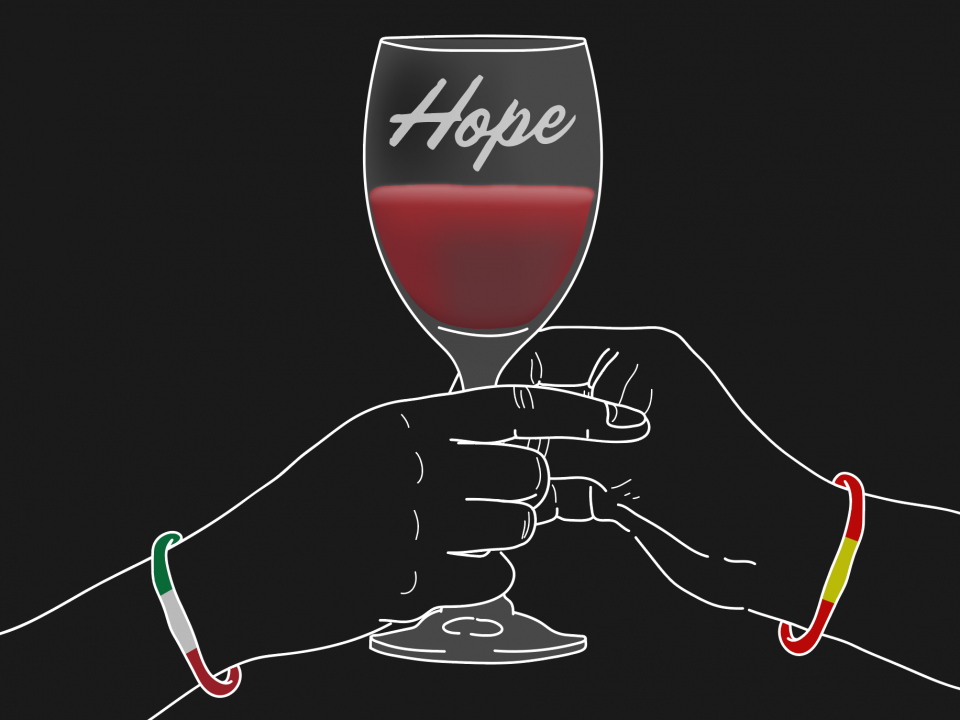
The Di-wine comedy of Brunello di Montalcino DOCG
February 6, 2020
Spanish wine producers and Spanish designations of origin: a love story from “I” to…”DO”
March 11, 2020From “Cin Cin” to “Kampai”: the success of Italian wine within the Japanese market

If we said the words “Italian wine abroad” which country would spring to mind first? What if we were to tell you that there is a new, fast growing, and dynamic market that lies to the east? We are talking about Japan. In the last 3 years, Italian Wine has shown a lot of promise on the Japanese market, the sun is rising quickly to the East in terms of Italian wine imports.
A date with data
Italian wine has always been at the top of the charts even outside its home, but if this also applies to the country of the rising sun, it is certainly thanks to a brilliant combination: that of Europe and Japan. In fact, the strong presence of the Made in Italy brand is supported by the recent trade agreement between the EU and Japan, a deal that has been in force since February 1, 2019. This accord has lifted tariffs on wine, consequently facilitating investments.
Until yesterday, France and the United States were the golden geese on the market podium, but a survey carried out by Agrifood Monitor shows that, out of 1000 Japanese consumers questioned, Italy is portrayed as the pinnacle provider of quality food and wine. Once the interviews were turned into statistics, the results are even more tangible. Compared to last year, imports to the Japanese market have grown by 13%, and this only takes the food and beverage market into consideration.
To compound the deservingly good reputation attributed to Italian food and wine, there is also an impressive range of prices available in this category (alongside French wines). According to ICE Tokyo data used in a WineNews article, the value of a bottle of Italian wine is 1000/1500 yen, a higher price range than when considering Chilean and Japanese bottles (500 to 1000 yen).
Diversity is always an opportunity
It goes without saying that Italian wine has always intrigued and fascinated the Asian palate, thanks in part to the wide range of quality wines available; IGT, DOC and DOCG’s. In fact, there are more than 500 denomination of origin wines being sold on the Japanese market. Niche experiences such as “Cucina of Veneto region and wines – DOCG Amarone della Valpolicella Classico and DOC Lugana” have become extremely in demand. This particular example was held on Tuesday, February 11, at “Antichi Sapori“, an Italian restaurant in the heart of Tokyo.
The president of Quattrovini Co Ltd Yoshihiro Nagase, in an interview for WinePeople, confirmed the rise in popularity of Italian wines in Japan, saying that “In Japan we have great respect and consideration for Italian food and wine culture. Since many chefs and sommeliers have studied in Italy, as in my case, they then return to Japan and open a restaurant that is as faithful to the culture as possible. At the moment we are experiencing a growing interest in native grape varieties, those wines that are rooted in the history of small production areas“. However, with this said, not everything that glitters is gold…
…new opportunities might be difficult to face
On the other hand, the diversity we are talking about is also a double-edged sword, as was pointed out by WineMeridian, Italy’s number one trade magazine. They explain that the sheer volume available to the public can be confusing, “a critical point is the great variety of grape varieties and wines, which makes it impossible to grasp the individuality of each wine without a little experience”. In response to this observation, Roddy Ropner (wine writer, educator and VIA Ambassador), in an article for Decanter explained that education is the key to overcoming this difficulty of choice on the Japanese market, arming the professionals can alleviate bewilderment “Entertaining at home is not common [in Japan], and when dining out, the phrase “Omakase“, or “I’ll leave it to you” is often heard when ordering both food and wine. Thus, sommeliers play a leading role in wine culture...”
European projects such as the Native Grape Odyssey program can provide the ammunition needed by wine sector professionals, bridging the divide between confusion and understanding. The NGO project has been tirelessly educating industry professionals on Italian wine culture, starting with its historical origins. This has been a critical first step towards reaching the most demanding Japanese wine buyers and lovers. The concept of the brand is preeminent in Japan, there is great value placed on the storytelling aspect, thus, the wine’s value is heightened by a good story that illustrates a producer’s roots; in a simple way, so that everyone out there can understand it and recall it.
The storytellers of Italian wine in Japan
However, if the land of the rising sun is becoming a safe haven for Italian wine producers, it might be interesting to note how the Bel Paese is portraying itself in the market. More than not, these wines are establishing themselves as luxury products. This is evidenced by the venues chosen to relay their brand identity to the public.
For example, at the Prosecco DOC Roadshow, already in its third edition. Held from the 22nd to the 26th of July. The event was attended by 24 Italian companies and spanned 4 Japanese cities; the venue chosen for Tokyo was nothing less than the Omotesando, one of the most luxurious neighbourhoods in the capital.

At this point, we understand (as does the market), that betting your Italian DOC wine in Japan is a winning stake. But is this the case in other markets? This is a loaded question and if you want to stay up to date on the success of our grape varieties in the rest of the world, keep following us, because we may be talking about this in our next article.



